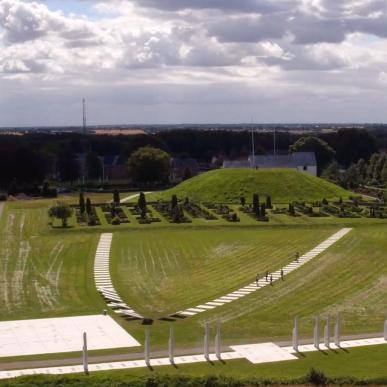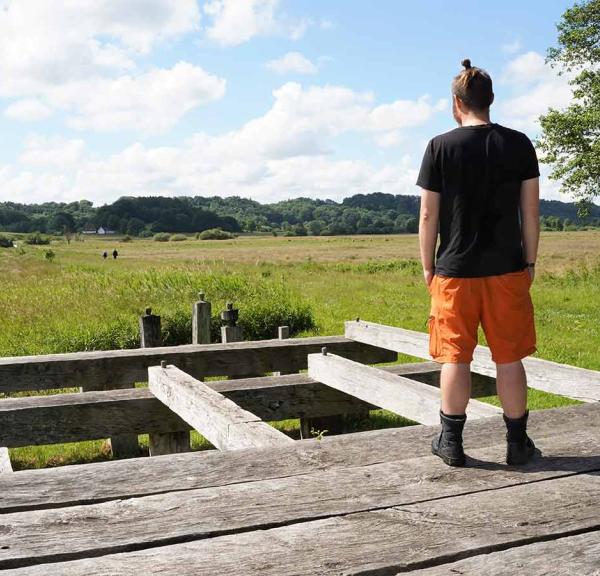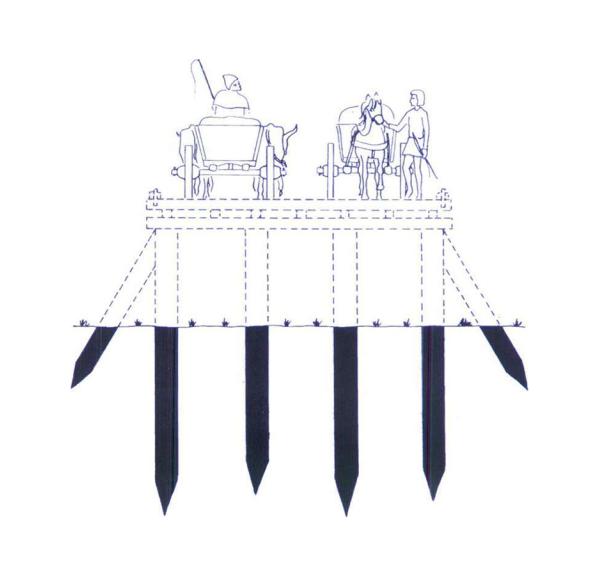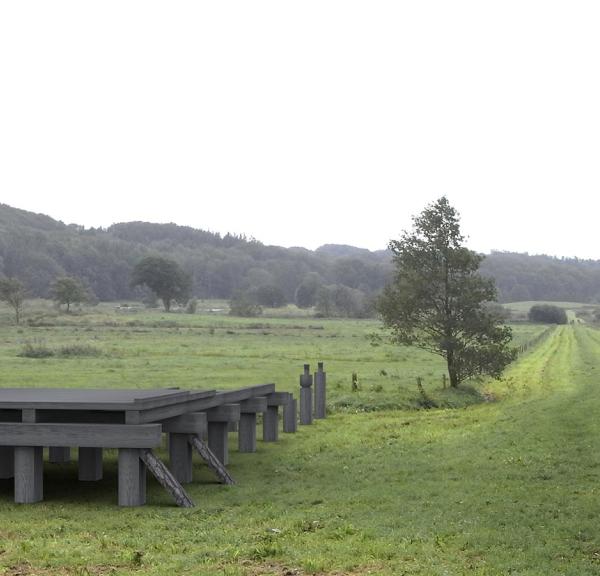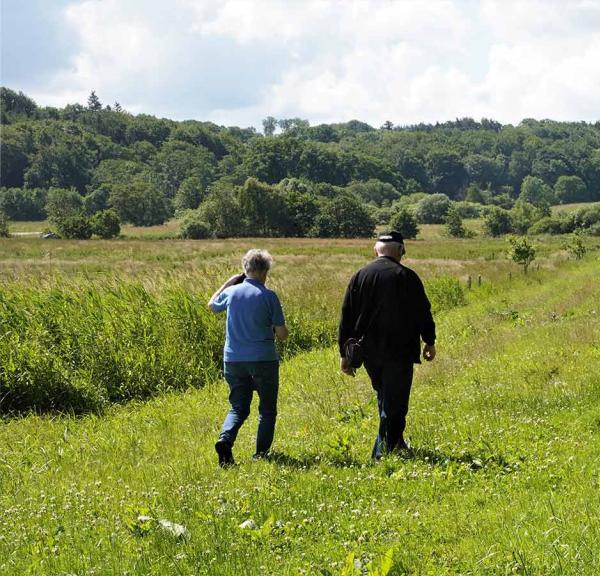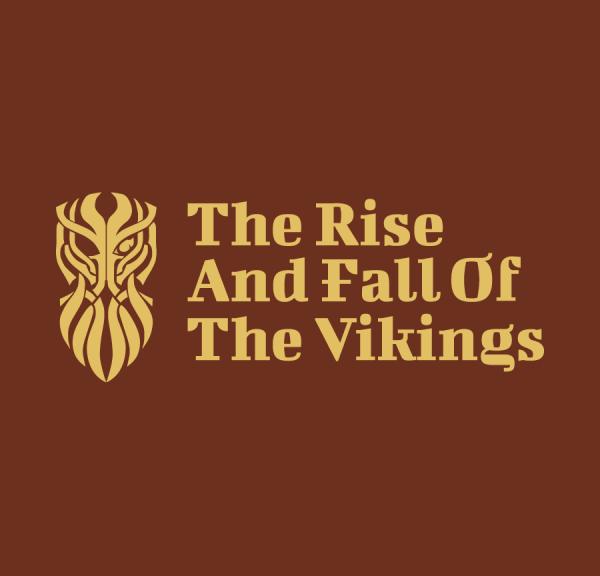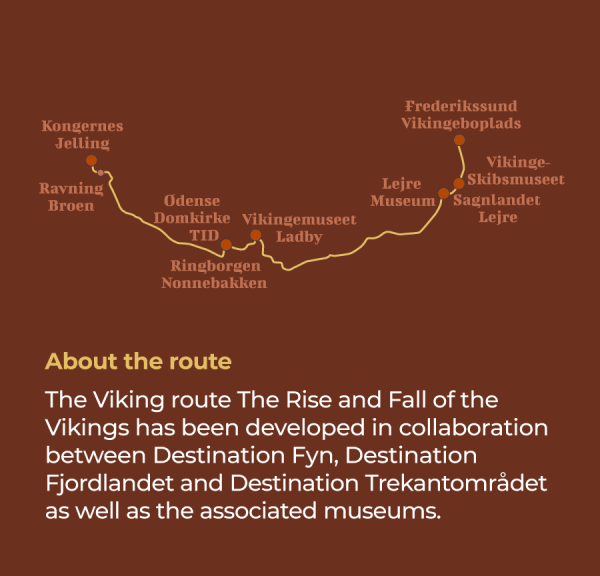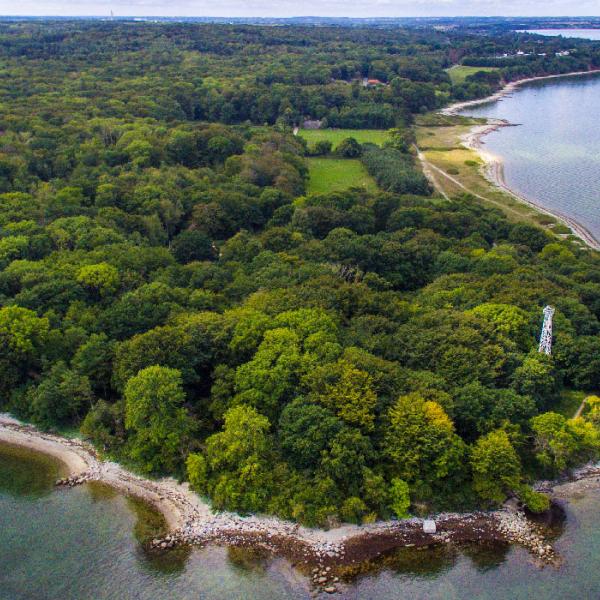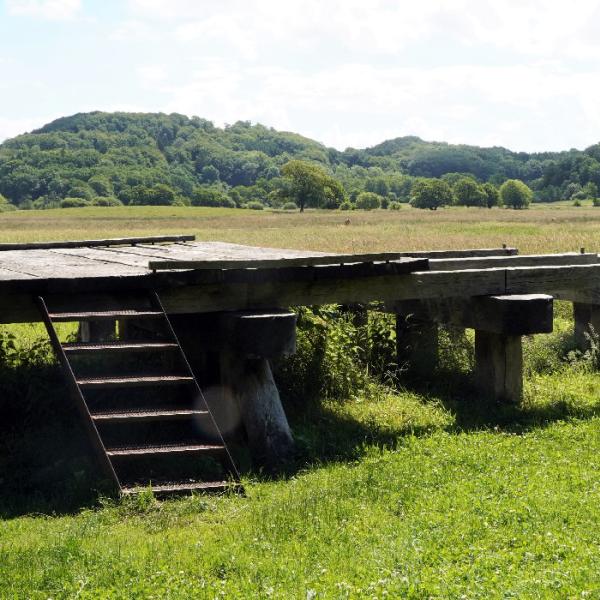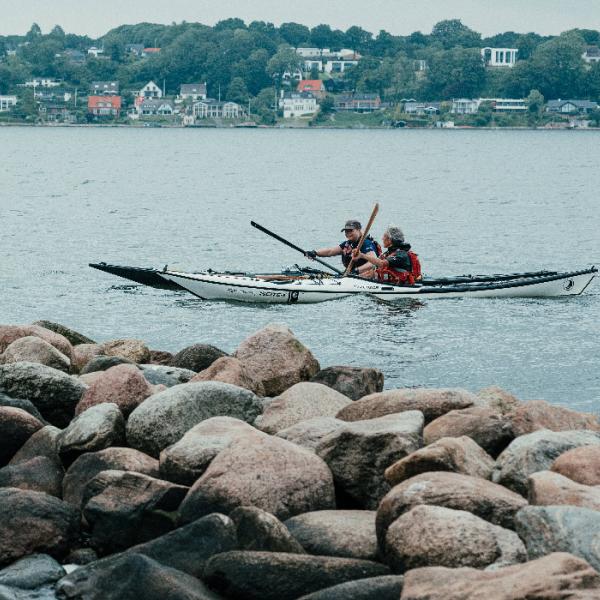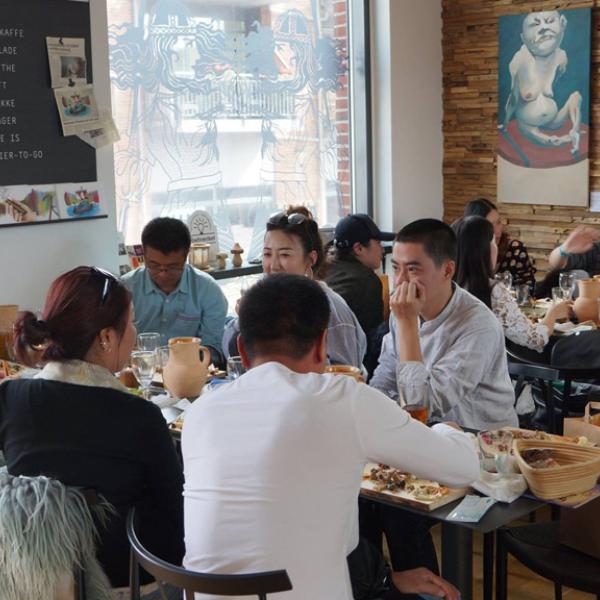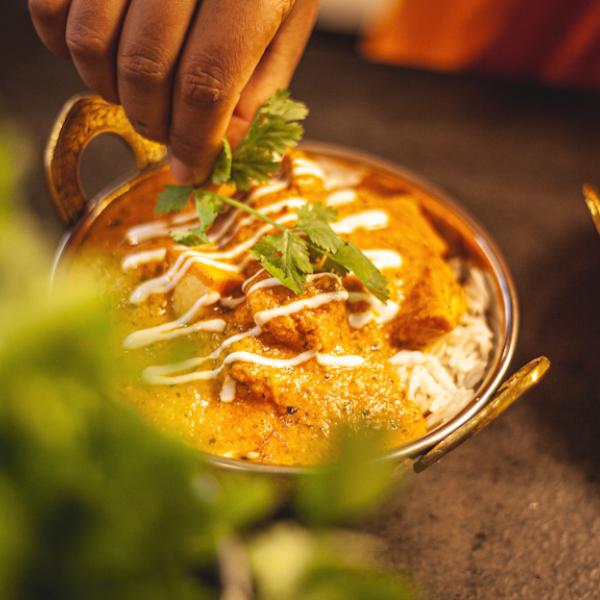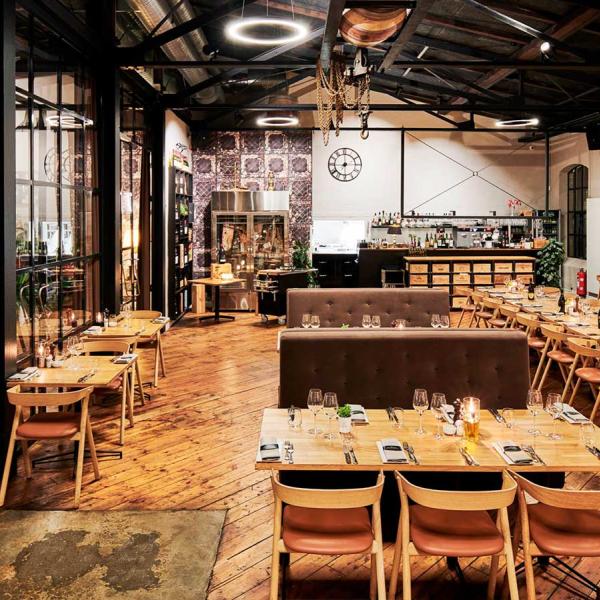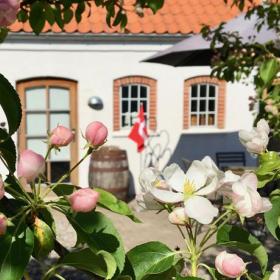

Rise and fall
In Kongernes Jelling you will encounter some of the biggest turning points in Danish history. Here we get a new royal family. A new religious worldview. A strong central power. And with the church, new tools that could strengthen the country's administrative apparatus.
It started under Gorm and Thyra. We don't know where they came from. But they became a new power couple in Denmark. Gorm may have been of royal lineage and commanded a fleet. Thyra may have been from a powerful family. Maybe they came to the country from outside.
A new royal family - still on the throne
Regardless of their origins, it is clear that a new royal family came to power in the 930s and founded the Jelling dynasty. A dynasty that still holds royal power in Denmark 1,000 years later.
Gorm and Thyra laid the foundation stones for the large monumental structure at Jelling - far from the well-known royal seats in Erritsø, Munkebo, Lejre and Tissø. It was erected on a field where there had been no previous buildings. The location high in the landscape, close to the army road and midway between Aarhus and Ribe was well chosen for propaganda purposes. Here you were sure to be seen.
Harald the Builder King
Gorm and Thyra consolidated their power base and Gorm remained in power for more than 20 years. When his son Harald Bluetooth became king, the building boomed. He had a keen eye for both the symbolic and the realpolitik side of the power game.
Harald had five ring forts built. These were military installations placed throughout the kingdom in strategic locations, close to the main transport routes - on land and at sea. He built a bridge across Vejle Ådal. At the time, it was the longest bridge in Northern Europe. He expanded Dannevirke, the border with the mighty German Empire in the south. And then he built on the monument site built by his father, Gorm the Old.
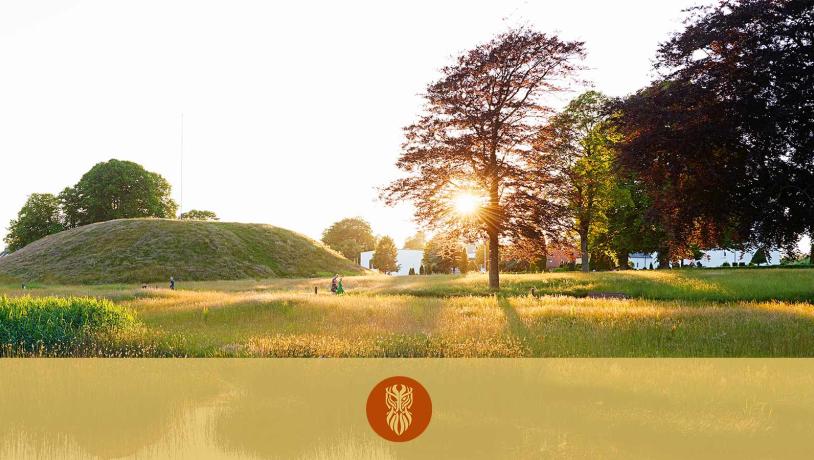
Photo:Kongernes Jelling
White Christ and the killing of kings
The monument site started as a pagan monument, but ended as a Christian one. Gorm the Old stubbornly rejected the new White Christ. But even he had to bow down when, after his death, he was moved from the burial chamber in the North Mound to Harald's new church on Monument Square. At least that's one of the many theories on the table in Jelling. Because the burial chamber in Nordhøjen is empty. And a displaced skeleton has been found in a grave under the floor of the first church Harald had built on the monument site.
The monument site is huge. The 1.4 km long palisade fence of solid oak posts enclosed the world's largest rune stone, the largest ship settlement, the largest burial mound and is, as far as we know, the largest building complex realised in the Viking Age within the borders of present-day Denmark.

King Harald spent countless manpower and materials on a facility with no military significance. It was a prestige project. It was built so that Harald could boast and show off his power.
Generation change accelerated with violence
Harald Bluetooth appointed his son Sweyn Forkbeard as co-king. In other words, what we today would call a smooth generational change. But the plan went awry. And Harold and Svein went to war over royal power. A war that ended when Harald was wounded and died. The myth says that he was shot in the back while doing his duty. But that's probably a myth. Perhaps it was created to damage Harald's good reputation and reputation.
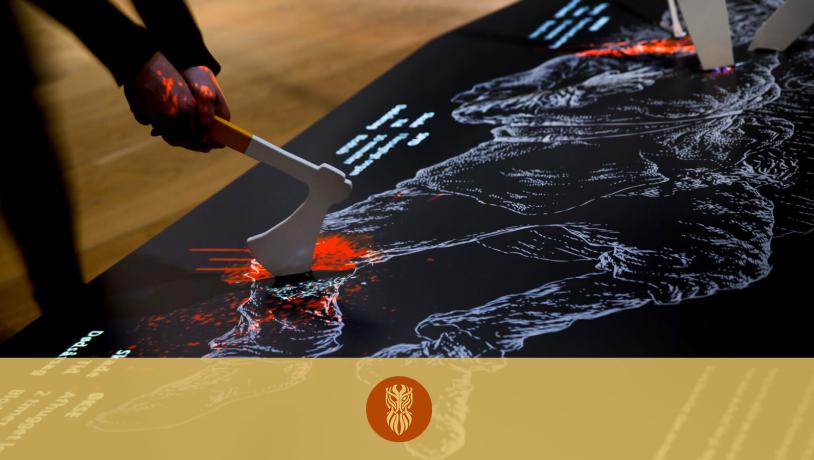
Photo:Kongernes Jelling
Experience more
You can discover the story of Harald, Svein and the rest of Denmark's kings and queens at Kongernes Jelling Experience Centre. Just do it. Discover how the royal line came about through bloody battles, intrigue, rebellion and diplomacy.
UNESCO World Heritage Site
The Jelling Stones, the burial mound, the church, the large ship and the palisade have all been included on the UNESCO World Heritage List. This is because the monuments, which are over 1000 years old, show you that this is where Denmark was united into one kingdom under a king who also Christianised the Danes. It is a unique monument.

©UNESCOPhoto:Logo from UNESCO - the United Nations Educational, Scientific and Cultural Organization.
Ravningbroen - Denmark's longest bridge through 1,000 years
The ring forts, the monuments in Jelling and the Ravning Bridge are examples of Viking craftsmanship and engineering skills. A small part of the Ravning Bridge has been reconstructed where the bridge once stood.
The Ravning Bridge was built of solid oak timber around 980 AD. For 1,000 years it was the longest bridge in Denmark. It wasn't until the now old Little Belt Bridge was new that we got a longer bridge in the country.
The bridge had 280 spans. Each span was built with 4 oak posts up to 6 metres long, supported by inclined posts on each side. On top of the four posts, the Vikings placed a crossbeam. They then connected the bridge spans with longitudinal beams. At the top, the craftsmen laid the boards that made up the carriageway. All joints are made with wooden pegs and nails. Building the bridge required a forest of approximately 350 hectares of mature oak trees. That's an area equivalent to 500 football pitches!
The bridge was measured with Viking surveyors' equipment, which consisted of hazel combs. Even so, the bridge deviates by a maximum of 5 cm from a straight line, which made it easy to be an archaeologist when the bridge was excavated in 1972. Because they knew exactly where the next bridge span would be.e.
Find your way to your Viking experiences
Read more and find your way to Kongernes Jelling, Ravningbroen and Kulturmuseet Vejle.
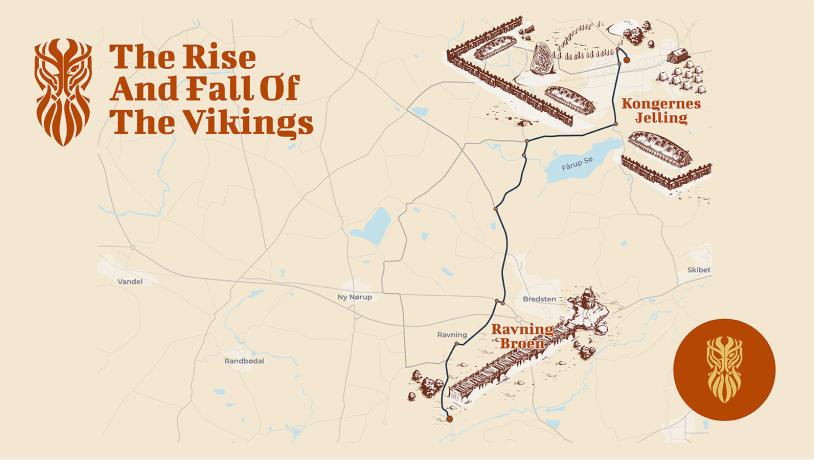
Photo:Illustration, Destination Trekantområdet
Kongernes Jelling is made for great experiences
Harald Bluetooth had the huge monument area built to show off his power to the princes, kings and rulers who visited him. The entire area is a UNESCO World Heritage Site. Come and discover why.
Engineering with hazel wands
Ravningbroen was the longest bridge in Denmark for 1,000 years. It was measured with a hazel cap, but deviates by a maximum of 5 cm from a straight line along the length of the bridge. See a reconstructed bridgehead in solid oak timber. And take a nice walk in the area.
Meet the world's best preserved moss league
Visit the Culture Museum in Vejle and meet a woman who was sacrificed in a bog at Haraldskær more than 2,000 years ago. See how Denmark came into being. Discover the history of the kings before Gorm and Harald. Discover the more recent history too.
Continue on the Viking route to Fyn and Sjælland
Take a deeper dive into the marvellous universe of the Viking Age. On Zealand, you can immerse yourself in a centre of power that lasted for over 500 years. Here you'll realise that there have been kings in Denmark before Gorm the Old. Continue on to Funen, where you can meet Denmark's last Viking king and experience the magical darkness of a Viking king's ship grave.
Three nature experiences on your way around
Trelde Næs
Fredericia
Ravningebroen
Hiking tour at Troldering
Kongens Kær
Vejle
Eat like a Viking
Café Sejd
Jelling
Social Dining
Paladspassagen in Vejle
Oven Vande
Restaurant in Fredericia
Discover more dining experiences
You can explore the area's restaurants and cafés here
Accommodation options
Destination Trekantområdet - The heart of Jutland offers a variety of accommodation options. You'll find everything from luxurious hotels, cosy bed & breakfasts and modern holiday homes to nature experiences in unique shelters and campsites close to water and forest.
Follow the footsteps of the Vikings

Go on a Viking adventure across Denmark. From Jylland to Fyn to Sjælland.

